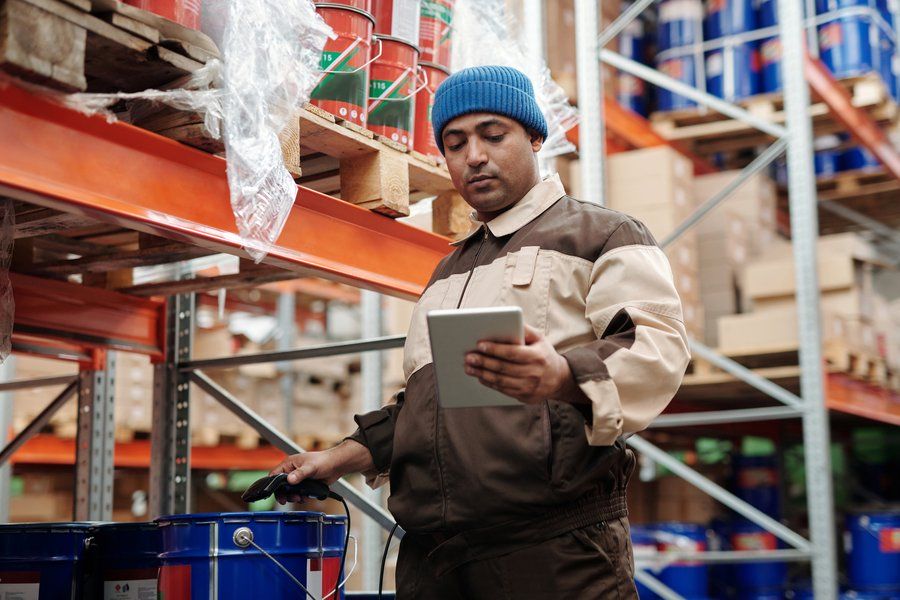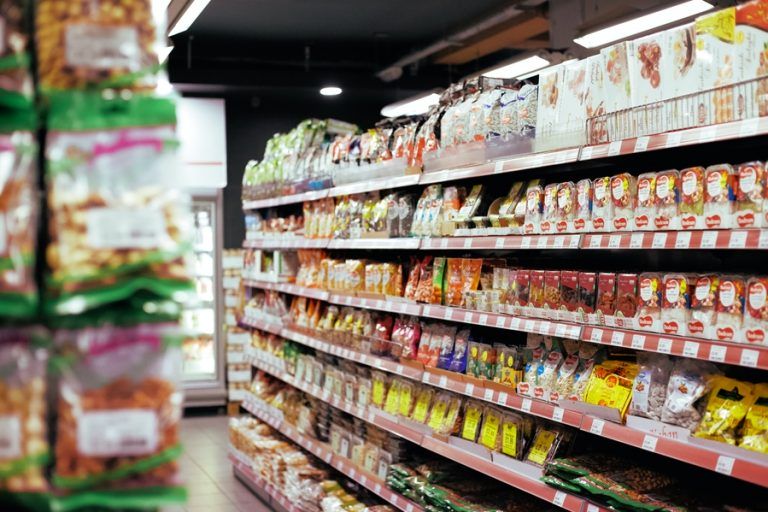Technology trends in retail 2020 – L like logistics

Wpis dostępny jest także w języku:
![]() polski
polski
There is no doubt that logistics is one of the most important areas of trade. What is more, with the development of retail chains (only in Poland several stores opens every day) and the migration of trade to the Internet, the importance of logistics is constantly growing, and more and more companies are building their key competitive advantage on it.
So what is logistics? According to Filip Kotler, it is “a process of planning, implementing and controlling the physical movement of materials and products from one place to another”. Each of these processes causes an increase in the value of products (as it is commonly known, strawberries in the field are cheaper than those in the warehouse, and these in turn are cheaper than those in the store), which is directly related to the realization of the basic consumer need: good (in other words, fast and convenient) availability of goods. It is worth noting at once the unobvious but extremely important process concerning logistics, namely the flow of information, without which the whole process of storage and actual movement would not be possible.
A slightly newer approach to logistics has been systematised and presented under the term SCM, or Supply Chain Management. Today it is a fully-fledged field of economic sciences with its research methods, software and scientific works. The position of Supply Chain Manager is therefore a typical, but also important position in all areas where logistics is the basis of business. It is worth remembering that it is, among other things, continuous optimization and innovations in logistics that have been behind the success of giants such as Amazon and Walmart.
Logistics-mix
Logistics-mix is quite a popular approach to systematizing logistics issues. It is included in the trade:
- storehouse
- distribution centre
- transport
- packaging
- communication
What are most interesting technology trends in this area?
Well, in the storeroom, innovations appear wherever it is possible to optimise this small but also extremely expensive space. Why expensive? It is no secret that the price of renting shop space is several times (!) higher than the price of renting warehouse space in a distribution centre. Moreover, the warehouse located next to the store competes with extremely valuable and limited shop space: if the warehouse could be reduced by a few square metres, several shelves could be placed on the recovered space, i.e. several dozen, if not several hundred more assortment items. That is why we can see one extremely important trend here. Improving the flow of information about demand and returns (so-called reverse-logistics), implementation of DOM models (Distributed Order Management), coordination of deliveries with other stores, reduction of logistic minima – all these activities require modern SCM class IT solutions. In a word – there is no shortcut.
Nieco więcej technologia ma nam do zaoferowania na poziomie centrum dystrybucyjnego. Począwszy od rozwiązań automatyzujących (rozwiązania AutoID, mobilne roboty transportujące palety, układnice, roboty pakujące), poprzez rozwiązania zmniejszające globalne stany magazynowe takie jak DSD (czyli Direct Store Delivery), aż po systemy umożliwiające przerzucenie kosztu magazynowania na producentów, przy pomocy składu konsygnacyjnego.
Transport in logistics
Transport also seems to have been undergoing a gigantic digital transformation for at least a decade. Most of the innovations are focused on solving specific supply chain management problems, such as intermodality, traceability, security or automation of information exchange between warehouses, customers, carriers, insurance companies and financial institutions. Undoubtedly, this is a gigantic area that would need to be developed separately, but I would like to take this opportunity to draw particular attention to a trend that seems to be crucial in 2020. It is about the automation of shipment monitoring. And I do not mean the famous GPS trucks tracking the routes of trucks, but the ability to reconstruct the history of each load, and even temperature readings for perishable goods. The traceability class solutions, as they are referred to, give the possibility to identify the product at every stage of production, storage and transport by scanning the identifier (barcode, QR code or RFiD tag) at every stage between the producer and the end recipient. Moreover, RFiD-based solutions are already available on the market, which can measure temperature (e.g. 5,000 records) at specific intervals and then store it in the memory of a microcomputer, hidden in an inconspicuous sticker.
Packaging in trade logistics of the most technologically neglected area
Packaging is probably the most technologically neglected area in trade logistics. This is largely due to the difficulty of standardization, which has actually stopped at the level of sea container standard and EPAL standard. Everything below these units is surrounded by chaos, resulting from the multitude of requirements of both the distribution centres themselves, the shops and finally the end customers. But also here you can see attempts to master this chaos. Although it has unfortunately not yet been possible to standardise the logistics box, modern stacker cranes are already able to cope with it. I have already written a little bit more about packaging robots, by the way, in the distribution centre, but here I would like to draw attention to the increasingly popular vision control systems based on machine vision and sensors. The camera is able to check if all the products specified in the order are in the shipment and if the address label is correct and sticked in the right place. It also allows you to weigh the shipment and automatically redirect it to the appropriate transport dock.
Information in logistics
Information in logistics, on the one hand, controls all processes and, on the other hand, is collected at every stage of movement and storage of goods. As soon as we return to the above described elements of the commercial logistic mix, we will notice that the amount of information generated in the whole logistic process is directly gigantic. The ability to combine this information is not only used in WMS (Warehousing Management System) or WES (Warehousing Execution System). Today we are talking about a completely new area of their use – BI and BigData class systems.
Logistics still treated as a cost-creating area
Logistics, although it increases the value of the product, is ultimately still regarded as a cost-creating area with huge reserves, which are the only way to be identified and reengineered. Again, this is a very broad issue requiring a separate article, but I would like to focus on something that belongs to the area of low hanging fruits, namely South Africa (Robotics Process Automation). In trade and distribution there are usually a lot of processes that can be automated with clever software. This is due to the fact that logistics operators often have no influence over the form of data with which the goods are described. Foreign suppliers, official documents, lack of equipment or standards among process participants. In this case, South Africa’s solutions, which support many entrepreneurs in their day-to-day operations, are a source of success.
Summary
As we can see, logistics is a huge area that not only has a lot to offer, but above all… a lot to optimize. Storeroom, distribution center, transport, packaging or communication are all areas that technology improves to a greater or lesser extent. However, these are also areas that already arouse great, constantly growing interest. Areas where technology has definitely not yet said the last word.
The article was created as part of Technology Trends in retail in 2020 series. Links to previous parts: Part I, Part II, Part III, Part IV.
The author of the article is Bartłomiej Łatka, Expert in retail and logistics at Euvic IT.
About the author
Bartłomiej Łatka
Expert in retail and logistics at Euvic IT.
Since 1997 he has been associated with the IT industry, a passionate and specialist in the area of activities at the interface between business and technology. He has participated in dozens of projects for clients from such sectors as: banking, telecommunications, public administration, retail, logistics and industry. Over the last few years he has been involved in business development management and sales and process automation solutions.








